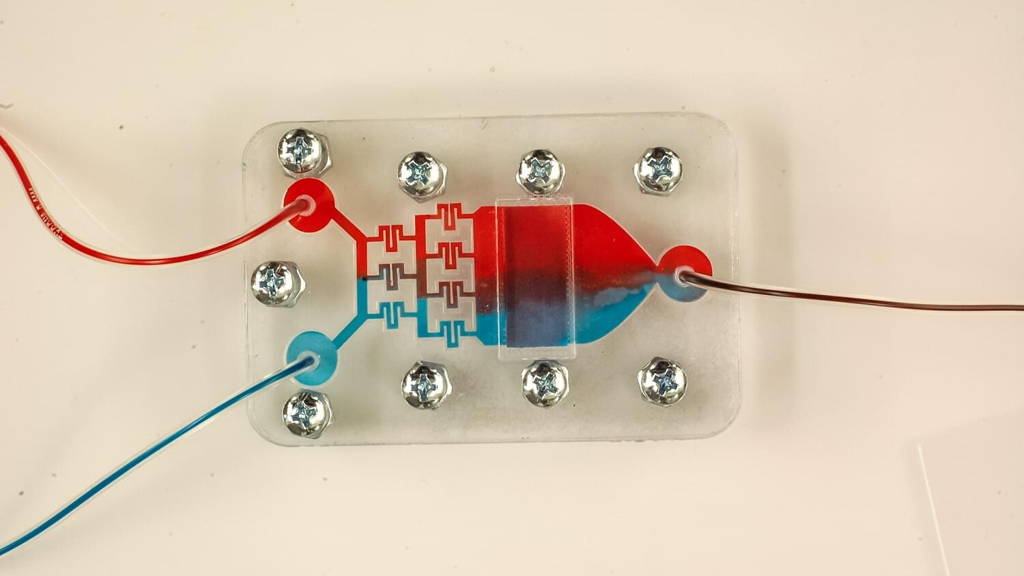This particular devices has been named ‘risk-on-a-chip’. I’s basically a small plastic case with several thin layers and an opening for a piece of paper where researchers can place a portion of tissue. This tiny environment produces risk factors for cancer and mimics what happens in a living organism.
“We want to be able to understand how cancer starts so that we can prevent it,” explains Sophie Lelièvre, professor of cancer pharmacology at Purdue.
The key to preventing cancer is understanding how it starts, but people generally don’t want to be prodded with potential carcinogens. Also, cancer is a disease of gene expression, and organization of genes is specific to a particular species and organ, which means it wouldn’t be useful to perform a risk study on rats or mice.
The risk-on-a-chip is based on an earlier cell culture device developed by Lelièvre and Ziaie to study cancer progression. To modify it for prevention, Ziaie plans to add nanosensors that measure two risk factors: oxidative stress and tissue stiffness.
Lelièvre: “We need to see if there’s a difference in primary cells from black women or Asian women or white women, because that matters. The way our genome is organized depends on an individual’s ancestry and lifestyle; it’s very complex. That’s why cancer is so difficult to treat.”
“We want to be able to understand how cancer starts so that we can prevent it,” explains Sophie Lelièvre, professor of cancer pharmacology at Purdue.
The key to preventing cancer is understanding how it starts, but people generally don’t want to be prodded with potential carcinogens. Also, cancer is a disease of gene expression, and organization of genes is specific to a particular species and organ, which means it wouldn’t be useful to perform a risk study on rats or mice.
Advantage of 3D cell culture environment
Thus the need for a model that mimics the organ in question. Lelièvre teamed up with Babak Ziaie, a professor of electrical and computer engineering at Purdue, to create the on-a-chip device. The difference with conventional 2-D monolayer cell culture platforms is that the Purdue-created device provides a 3-D cell culture environment with engineered gradient generators that promote the biological relevance of the environment to real tissue in the body,” said Rahim Rahimi, a graduate student in Ziaie’s lab.The risk-on-a-chip is based on an earlier cell culture device developed by Lelièvre and Ziaie to study cancer progression. To modify it for prevention, Ziaie plans to add nanosensors that measure two risk factors: oxidative stress and tissue stiffness.
- Oxidative stress is a chemical reaction that occurs as a result of diet, alcohol consumption, smoking or other stressors. It alters the genome of the breast, aiding cancer development. The risk-on-a-chip will simulate oxidative stress by producing those molecules in a cell culture system that mimics the breast ducts where cancer starts.
- Tissue stiffness refers to the stiffness of breast tissue, which has been found to contribute to onset and progression of breast cancer. The research team will measure stiffness within a tunable matrix made of fibers, whose density is relative to stiffness.
Risk-on-a-chip tailorable for different groups
Breast cancer is particularly difficult to prevent because multiple risk factors work independently or in combination to promote disease onset. To account for this, the risk-on-a-chip will be tailorable to different groups of women at risk.Lelièvre: “We need to see if there’s a difference in primary cells from black women or Asian women or white women, because that matters. The way our genome is organized depends on an individual’s ancestry and lifestyle; it’s very complex. That’s why cancer is so difficult to treat.”






